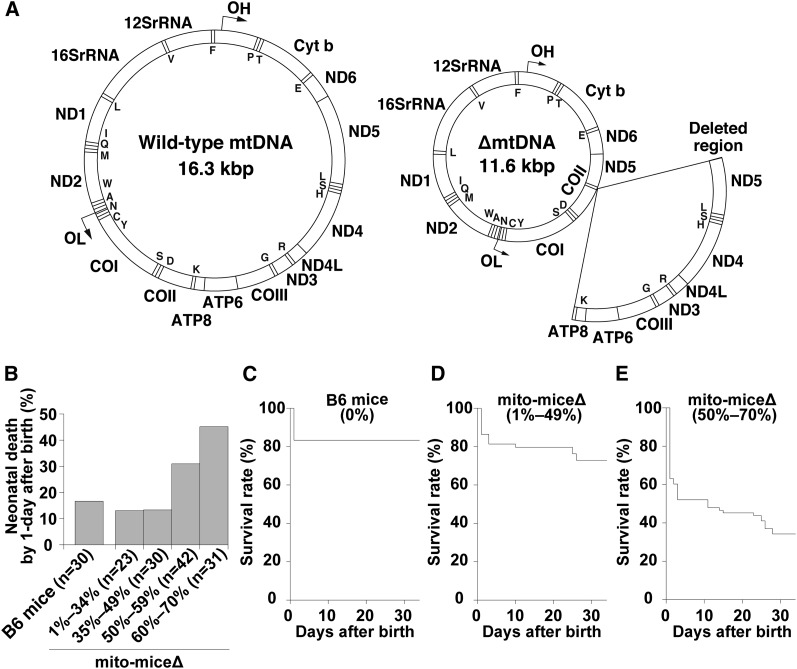Figure 1.
Gene map of ∆mtDNA introduced in mito-mice∆ and observations of mito-mice∆ on the early life. (A) A wild-type mtDNA (left) is a circular DNA (16.3 kbp) and encodes 37 genes, including 13 mRNAs, 22 tRNAs, and 2 rRNAs. A mtDNA with a common deletion (∆mtDNA; right) introduced in mito-mice∆ is 11.3 kbp in size, because 13 genes, including 7 mRNAs and 6 tRNAs (arc) are lost by a deletion. Single capitals in maps indicate tRNA genes. (B) Frequency of neonatal death in mito-mice∆ carrying 1–70% ∆mtDNA in their tails. Neonates of mito-mice∆ were classified into four groups carrying 1–34% (n = 23), 35–49% (n = 30), 50–59% (n = 42), and 60–70% (n = 31) ∆mtDNA, respectively, in their tails. Neonates of wild-type B6 mice were used as normal controls (n = 30). (C–E) Life span of mito-mice∆ carrying 1–70% ∆mtDNA in their tails was assessed for days 1 to 34. Based on the observed frequency of neonatal death in mito-mice∆ (see panel B), neonates of mito-mice∆ were classified into two groups carrying 1–49% (n = 53) (D) and 50–70% (n = 73) (E) ∆mtDNA in their tails, and the life span of each group was examined. The life span of wild-type B6 mice was also examined as a normal control (n = 30) (C). Survival curves were compared between mito-mice∆ carrying 1–49% ∆mtDNA and wild-type B6 mice (P = 0.3054, log-rank test) and between mito-mice∆ carrying 50–70% ∆mtDNA and wild-type B6 mice (P < 0.0001, log-rank test).

